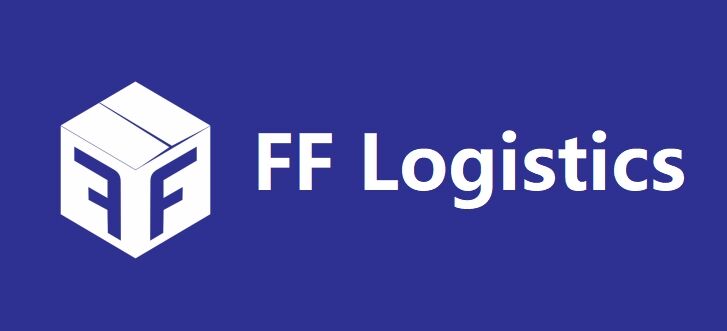The Unique Shipping Challenges in the Beauty Industry
Fragile Product Requirements and Breakage Risks
The beauty industry faces significant shipping challenges due to the fragility of products, such as glass bottles, which complicate transportation. These delicate items require special handling to prevent damage during transit. In fact, statistics indicate that breakage rates within the beauty sector are a growing concern, highlighting the need for improved shipping strategies. To tackle these challenges, solutions like custom cushioning and protective packaging materials have been tailored specifically for fragile beauty products. These solutions not only minimize breakage risks but also ensure that products arrive safely and intact, preserving their quality and consumer satisfaction.
Temperature-Controlled Shipping Demands
Temperature-sensitive beauty products, such as cosmetics and skincare lines, necessitate special shipping conditions. Maintaining temperature controls is crucial to ensure product integrity and quality during transit. Industry standards dictate specific temperature ranges that must be adhered to, protecting items from spoilage and maintaining their efficacy. As such, refrigerated transport options have become essential logistics solutions. While these options effectively preserve the condition of products, they also impact shipping costs by increasing the need for specialized equipment and personnel. This demand for temperature-controlled shipping underscores the complexity and expense involved in delivering these delicate products.
Cross-Border Regulatory Compliance Costs
Cross-border shipping presents regulatory challenges for beauty brands, affecting shipping processes significantly. Different regions impose specific regulations, and failure to comply can lead to costly ramifications for businesses. Brands may incur fines and face delays if they fail to meet these regulatory standards, making compliance management systems crucial in ensuring smooth transit. By minimizing fines and facilitating seamless cross-border movement, these systems unlock potential savings in shipping costs while protecting brand reputation. For instance, businesses leveraging such systems can optimize operations, reducing unexpected expenses and aligning with cross-border regulatory compliance requirements.
How Vertical Integration Streamlines Beauty Logistics
In-House Fulfillment and Reduced Third-Party Markups
Vertical integration offers beauty brands the unique advantage of managing fulfillment operations internally, significantly reducing dependence on third-party logistics providers. By taking control of these processes, companies can effectively eliminate additional costs related to external partners. Data suggests that businesses handling logistics internally can achieve up to 20% cost savings compared to those relying on intermediaries. However, while expanding in-house operations, maintaining quality control presents a crucial challenge, requiring stringent protocols and regular oversight to ensure standards are consistently met.
End-to-End Supply Chain Visibility
Achieving end-to-end supply chain visibility is essential for beauty brands aiming to enhance efficiency and minimize delays. Technologies such as RFID and cloud computing play a pivotal role in providing comprehensive insights into each stage of the logistics process. These tools enable proactive inventory management, helping brands anticipate potential disruptions and optimize stock levels to meet market demand. By harnessing these technologies, beauty brands can ensure seamless operations and improve customer satisfaction through timely deliveries.
Consolidated International Shipping Workflows
Consolidating international shipping workflows can lead to significant reductions in overall shipping costs for beauty brands. By streamlining shipments, companies can avoid multiple cross-border charges and optimize delivery routes. For instance, a prominent case study demonstrated that consolidating shipping operations reduced costs by up to 30% and improved delivery times by approximately 15%. Additionally, forming strategic partnerships with international carriers is vital to ensure optimal routes and efficient transit, further enhancing the cost-effectiveness and reliability of global shipping operations.
Customized Packaging Solutions for Cost Efficiency
Right-Sized Packaging to Minimize Dimensional Weight Charges
Dimensional weight is a critical factor in determining shipping costs, particularly for beauty products. It calculates shipping fees based on the package's size rather than its actual weight. Therefore, optimizing packaging to snugly fit products is essential to avoid unnecessary costs. One strategy is to design custom packaging that matches product dimensions, thereby minimizing dimensional weight charges. For example, Sephora has successfully implemented right-sized packaging solutions, which have significantly cut down on shipping expenses. By using packaging that eliminates excess space, businesses not only save on shipping costs but also contribute towards more sustainable logistics.
Protective Material Optimization Strategies
Choosing the right protective materials is paramount for beauty brands looking to minimize shipping costs without compromising product safety. Innovative solutions such as biodegradable packaging materials are increasingly popular, providing eco-friendly options that maintain product integrity. Some brands are now shifting towards materials like compostable wraps and padded mailers which offer robust protection. These solutions can dramatically lower logistics costs by reducing the need for additional protective layers. For instance, L'Oréal has optimized its packaging process by selecting materials that strike a balance between safety and cost, leading to significant reductions in overall shipping expenses.
Bulk Sourcing of Sustainable Packaging Materials
Sourcing sustainable packaging materials in bulk not only enhances brand image but also aids in cost efficiency. The growing demand for eco-friendly packaging in the beauty market is undeniable, with buyers choosing brands that partake in environmental responsibility. By purchasing these materials in bulk, brands can lower their packaging costs substantially. Data indicates that the demand for sustainable packaging is increasing, with brands saving up to 30% on packaging costs by opting for eco-friendly alternatives. Partnering with suppliers specializing in sustainable materials can provide competitive advantages and reinforce a brand’s commitment to environmental sustainability. These practices not only foster better relationships with environmentally conscious consumers but also promote long-term cost efficiencies.
Regional Warehousing Strategies for Faster Delivery
Strategic Warehouse Placement Near Beauty Hubs
Strategically placing warehouses near beauty hubs can significantly minimize shipping times and improve delivery efficiency. Companies that position warehouses close to key markets reduce transit distances, enabling quicker deliveries to consumers. For instance, L'Oreal strategically placed warehouses near major metropolitan areas like New York and Los Angeles, resulting in faster fulfillment and enhanced customer satisfaction. Moreover, conducting thorough local market analysis helps in deciding the most optimal warehousing locations, ensuring alignment with demand hotspots and maximizing logistics efficiency. This strategic positioning not only benefits customers with quicker shipments but also optimizes resources, reducing overall shipping costs.
Inventory Allocation Based on Demand Forecasting
Effective demand forecasting and inventory allocation play a crucial role in optimizing beauty product distribution. Techniques such as advanced data analytics and predictive modeling allow companies to anticipate consumer demand more accurately, ensuring that inventory levels are aligned with market needs. For example, Estée Lauder employs sophisticated forecasting tools to analyze purchasing trends, yielding improved inventory turnover rates and reduced lead times. The successful implementation of these strategies can drastically cut down excess stock and prevent shortages, facilitating a smooth and efficient supply chain process that meets consumer expectations promptly.
Reduced Last-Mile Delivery Expenses
Last-mile delivery represents the most expensive segment of shipping, particularly in the beauty industry. Analyzing this phase reveals several strategies to mitigate costs effectively. Utilizing local delivery services stands out as a viable solution to reduce expenses, as these providers often have better familiarity with regional logistics, enabling more efficient route planning and execution. According to a study by McKinsey, companies that optimized their last-mile delivery approaches reported significant cost reductions, reflecting the power of strategic management in this crucial delivery stage. By implementing these refined methodologies, beauty brands can substantially lower last-mile expenses, easing their overall freight burden.
FAQ
What are the main shipping challenges in the beauty industry?
The main challenges include managing the fragility of beauty products, ensuring temperature-controlled shipping for sensitive items, and adhering to cross-border regulatory compliance.
How does vertical integration benefit beauty brands in logistics?
Vertical integration helps beauty brands reduce costs by managing fulfillment operations in-house, offering end-to-end supply chain visibility, and consolidating international shipping workflows.
Why is custom packaging important for beauty products?
Custom packaging is crucial to minimizing dimensional weight charges and shipping costs, while also providing safety and preserving the quality of beauty products.
How can beauty companies reduce last-mile delivery expenses?
Beauty companies can reduce last-mile delivery costs by using local delivery services that improve route planning and execution, optimizing their last-mile delivery strategies.



